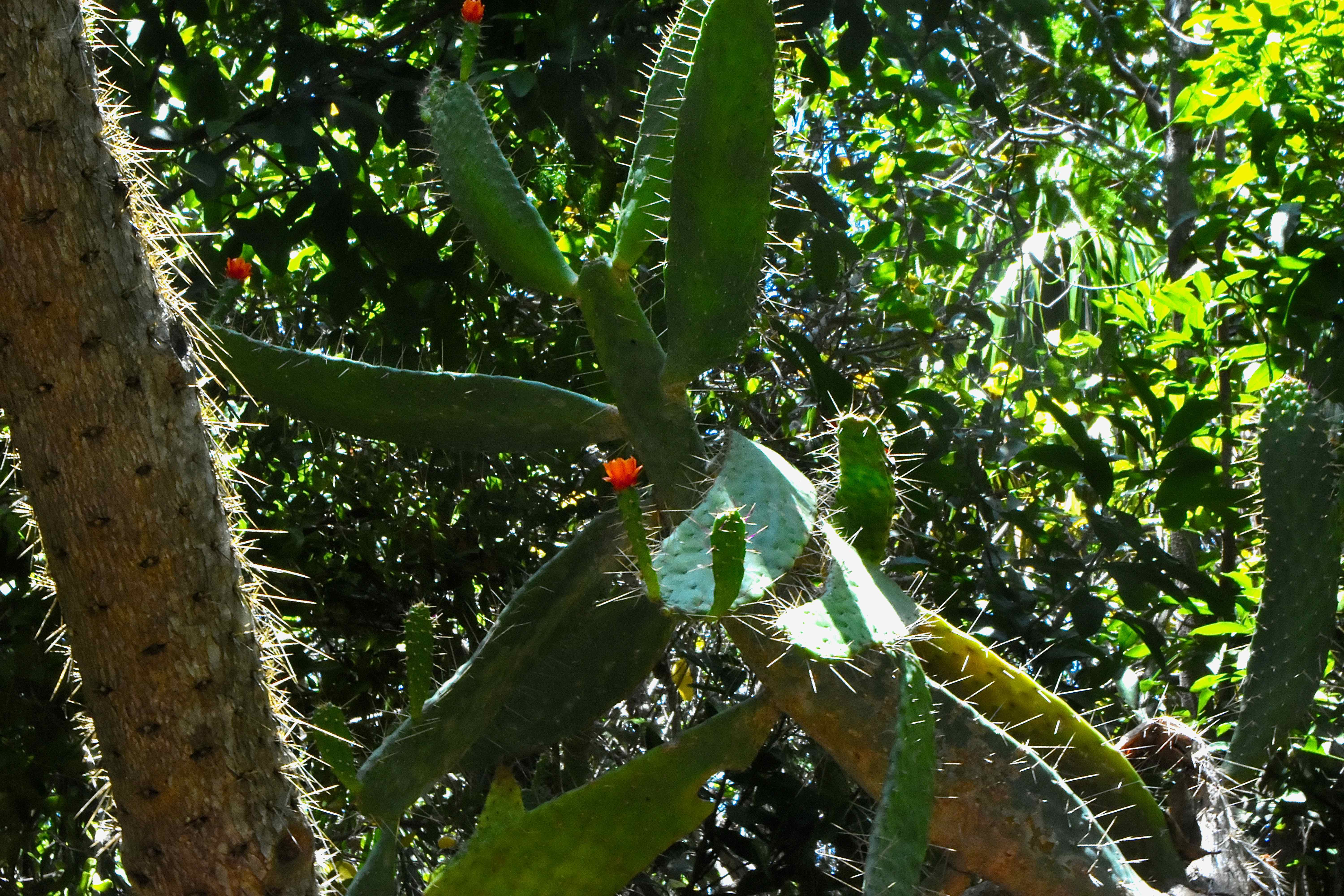
Florida semaphore cactus, photographed at Key West Tropical Forest and Gardens, Stock Island, Key West, Monroe County, in April 2017.
The future for Florida semaphore cactus, Consolea corallicola, might seem bleak. It's considered extremely endangered, found wild in only two places on the entire planet, both in the Florida Keys.
At one spot, the population is apparently entirely male — clones of each other — fruits rarely and produces few if any viable seeds. On top of that, it's under assault from a South American moth once exported to Australia to bring Down Under's invasive pricklypear population under control.
But it does have two things going for it: it does reproduce vegetatively, meaning clippings can be taken to start new plants. And there are scientists and a federal agency trying to rebuild its population in protected parts of the Keys. More on this in a bit. First, some Florida semaphore cactus basics.
It is a Florida native cactus, large, almost tree like, growing as tall as 15 feet. It has a cylindrical trunk that's gray and extremely spiny. You can get a good look at it in the photo above. The branches are held out at angles, resembling a signaling system called semaphore that uses flags and arms held in various positions to communicate messages. The branches aren't segmented the way prickly pears are. The spines are as long as four inches and occur in clusters of two to four. Flowers are about an inch across, red to orange in color and bloom throughout the year, though peaking in December through April. The fruit is one to three inches long, yellow, flat and spiny. It is a member of Cactaceae, the cactus family.
Semaphore cactus grows in coastal berms, rock barrens, rockland hammocks and buttonwood forests. It grows on ground high enough that normal tides don't reach but extreme storm surge occasionally does. The salt water intrusion helps eliminate plants that might otherwise compete with the cactus for resources. The cactus once ranged throughout the Keys, but development and overcollecting by cactus hobbyists nearly wiped it. In fact, in the late 1970s, it was considered extinct. In the early 1980s, however, scientists found it growing at a site on Little Torch Key. There is a second natural population on Swan Key within Biscayne National Park. Scientists have been working to reestablish semaphore cactus on protected lands from Key Largo to Sugarloaf Key. In 2013, the year the Feds added semaphore cactus to the Endangered Species List, scientists planted 300 cacti in Crocodile Lake and Key Deer national wildlife refuges.
Florida semaphore cactus faces existential threats from invasive species, human traffic, fires, wild animals, etc. But it also must deal with the cactus moth, Cactoblastis cactorum. It's a native of South America exported to Australia as a biological means of controlling invasive pricklypears way back in 1925. It was so successful that the Aussies actually erected a monument as a gesture of gratitude toward the bug. The moth was similarly used in India, Hawaii, South Africa and several Carribean islands. From there, it made its way to Florida. The moth uses cacti as host plants for their offspring, laying as many as 140 eggs at a time. The larvae burrow into the pads and eat the cactus from the inside out, eventually killing it.
Pesticides are problematic because they also kill rare and endangered butterflies as well. Biological warfare in the form egg parasites have the same problem. The only effective control at this time is quarantine, but other biological control methods are being studied.
Florida semaphore cactus is also known as semaphore pricklypear.
Key West Tropical Forest and Gardens



